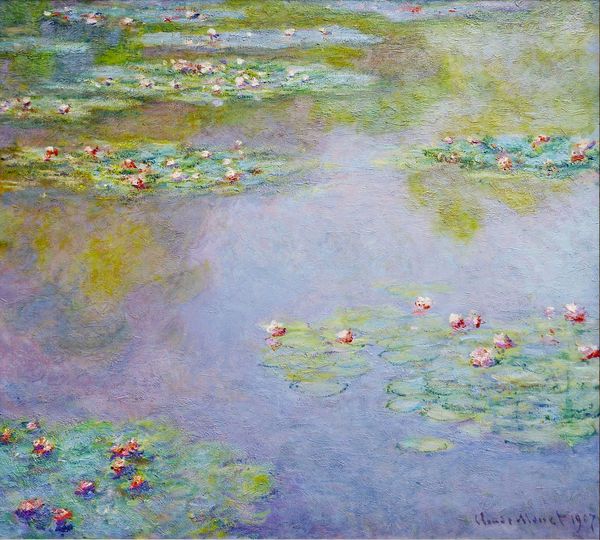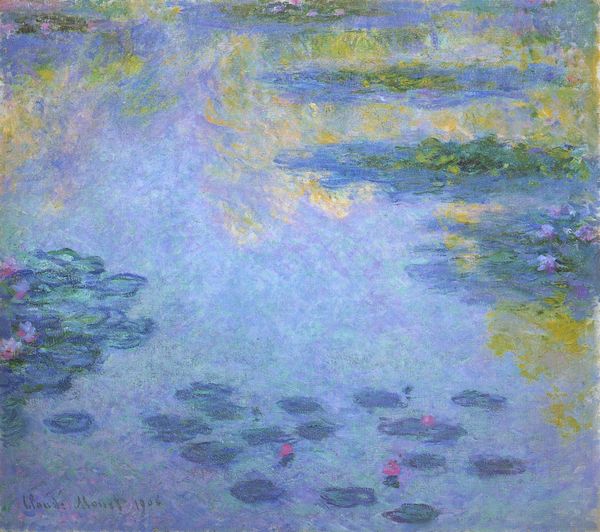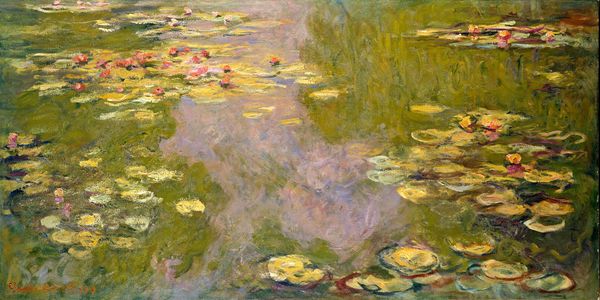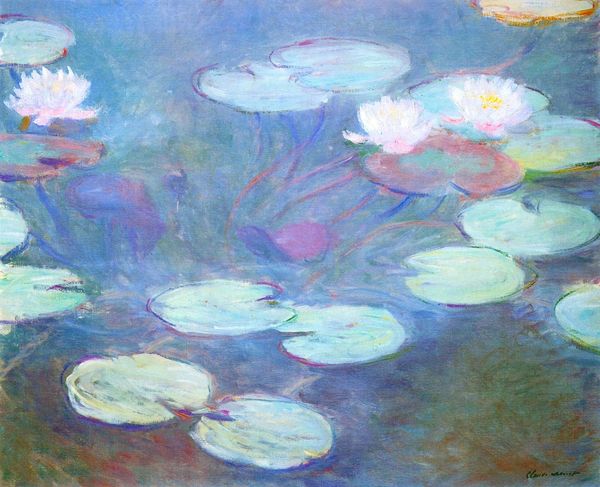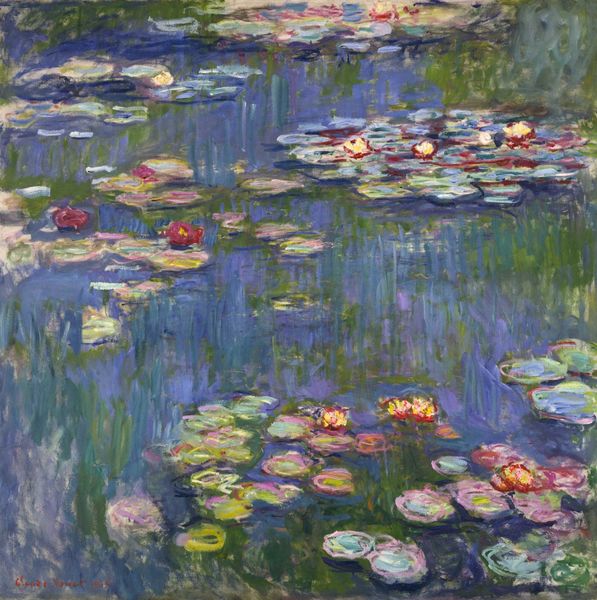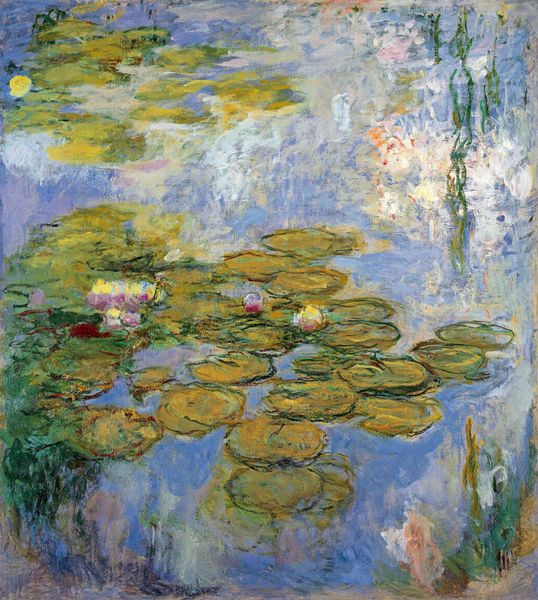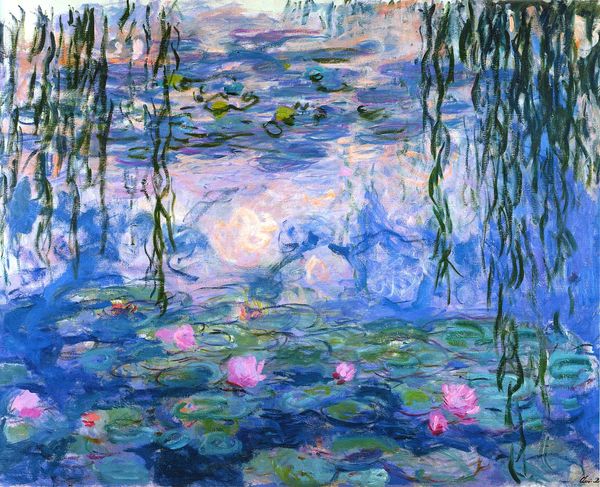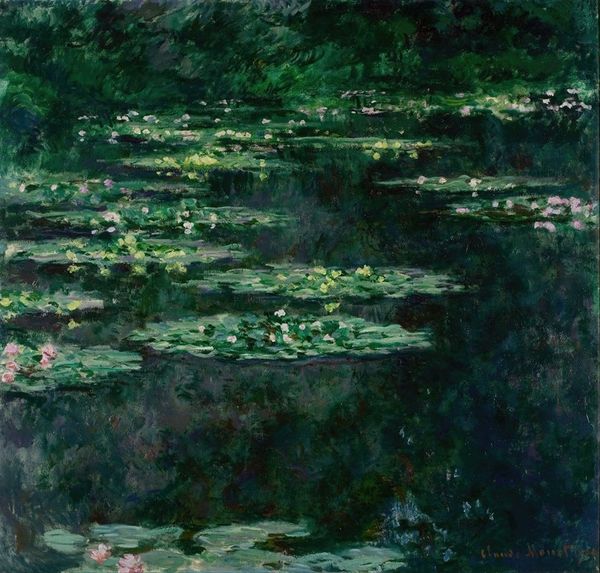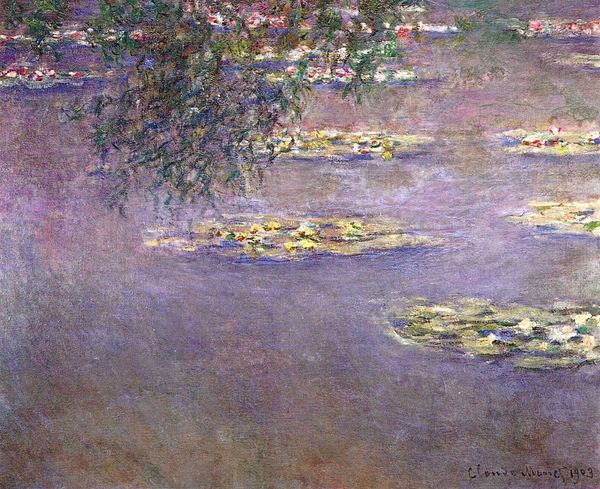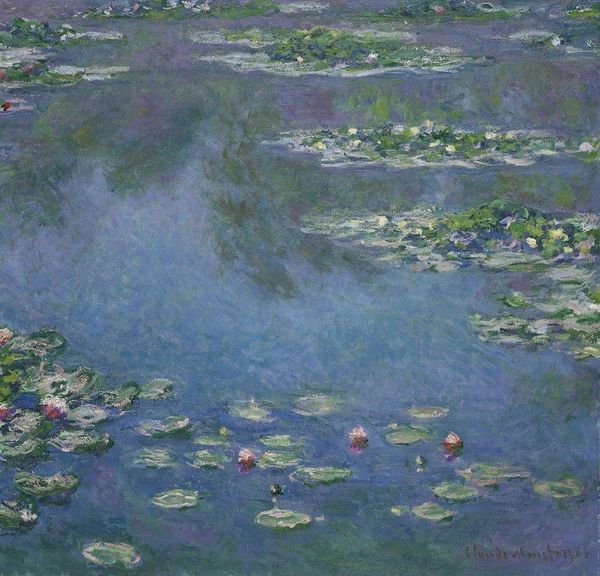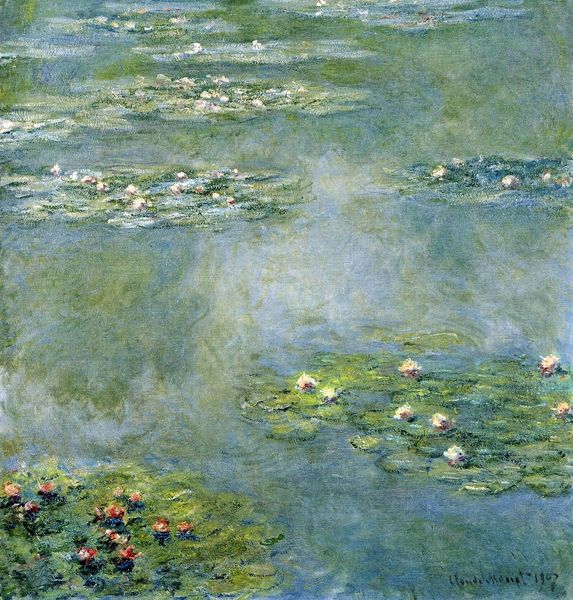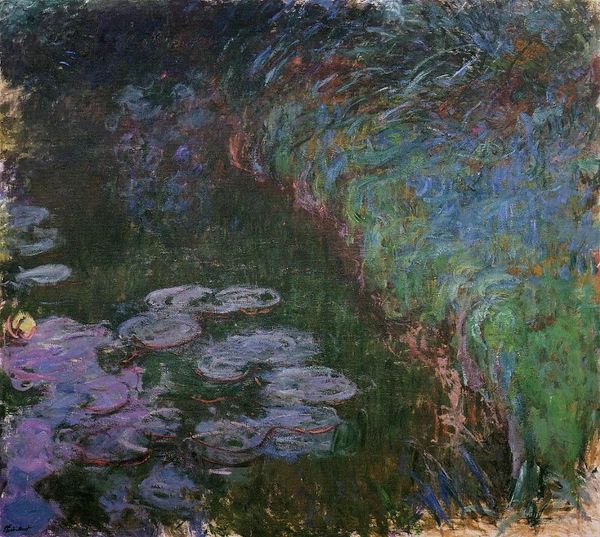
Copyright: Public Domain: Artvee
Editor: Here we have Claude Monet’s "Nymphéas," painted in 1907 with oils. The gentle colors and blurred forms give it such a dreamlike quality, like a memory fading. What strikes you when you look at it? Curator: Immediately, I see how Monet uses water lilies as more than just flowers. The water garden becomes a mirror, reflecting not just the sky, but a whole host of cultural echoes. Don't you see it too? Editor: Cultural echoes? I'm not sure I follow. Curator: Consider the lily. In Western art, it often represents purity, the Virgin Mary, rebirth…But Monet gives it a different symbolism here. Think of it less as a symbol and more as the feeling that the water lily can be transformed by a painter, much as Japanese ink painting uses very few elements. It reflects this tradition. Don’t you feel this ephemeral moment? Editor: Oh, I see! So, the painting isn’t necessarily *about* the lilies themselves, but what they represent and how he paints them, especially through those influences...it also feels very modern! Curator: Precisely! The ‘all-over’ composition anticipates abstract art, creating a space for meditation and introspection, it transcends culture, touches universal aspects of human experience and art itself. Editor: Wow, I didn’t realize there was so much depth beneath the surface. Curator: It’s a surface designed to draw you into deeper waters. Symbols are more than illustrations; they create continuities across time and traditions. The flowers become us. Editor: It makes me want to look at art through a completely different lens, finding these hidden connections. Curator: Good! Never stop seeking; art is but a conversation with history.
Comments
No comments
Be the first to comment and join the conversation on the ultimate creative platform.

